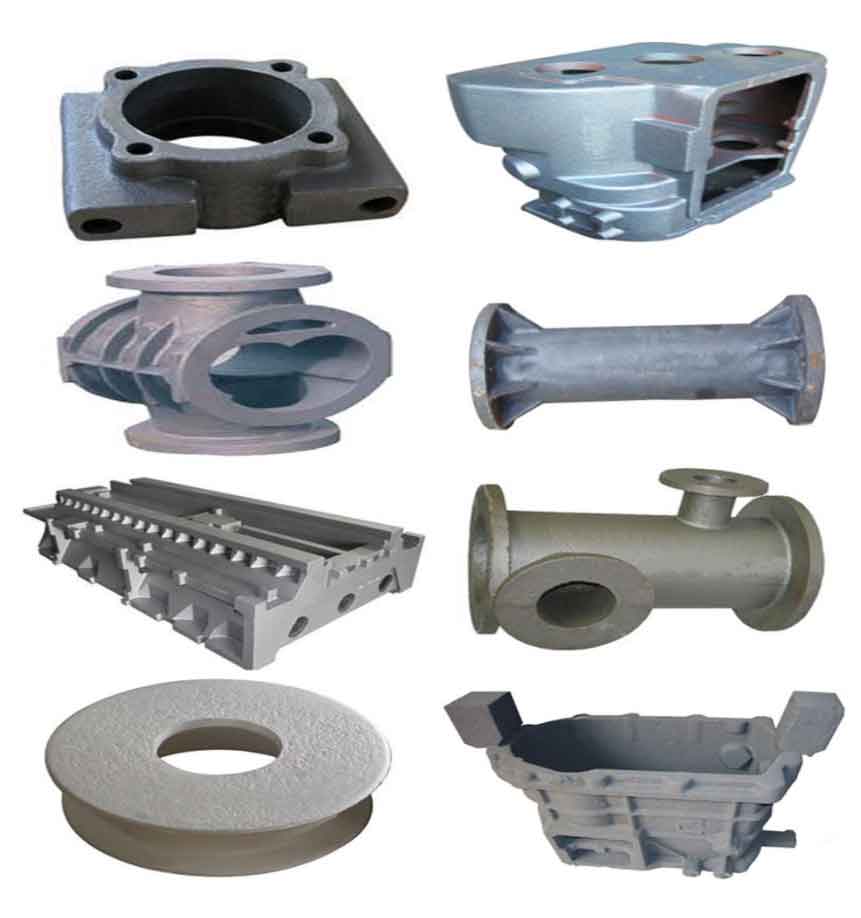The research on the thermal fatigue resistance of gray cast iron mainly focuses on the graphite, matrix structure and chemical composition. A large number of experimental studies show that the thermal fatigue resistance of gray cast iron is mainly related to the carbon content, but the specific effect of carbon content on the thermal fatigue performance is more complex. In this regard, relevant studies show that the thermal fatigue resistance of gray cast iron increases with the increase of carbon content, but reaches the limit when the carbon content reaches 3.69%, then gradually decreases, and the growth rate of thermal fatigue crack also begins to become faster. The main reason is that with the increase of carbon content, on the one hand, the thermal conductivity of gray cast iron is increased, on the other hand, the number and size of graphite are also increased, and the splitting effect on gray cast iron is stronger and stronger. At the same time, it also affects the oxidation resistance, thermal expansion coefficient and elastic modulus of the material, so the thermal fatigue resistance decreases instead.

Rukadikar defines the form of graphite in four ways: the ratio of graphite to carbon equivalent, the type of graphite, the size of graphite, and the ratio of graphite length to thickness. In his experiments, he found that the greater the ratio of graphite to carbon equivalent, the better the thermal fatigue resistance of cast iron; The smaller the ratio of graphite length to thickness, the better the thermal fatigue resistance of gray cast iron. This is because flake graphite has a serious splitting effect on the matrix, reduces the material strength, and there is often a large stress concentration at the tip of graphite. In addition, oxygen is easy to penetrate into the matrix along the flake graphite, resulting in deep oxidation of the material, which reduces the thermal fatigue resistance of the material, and the thermal fatigue performance of gray cast iron with small and dense graphite flakes is worse. The coarser graphite can make the crack growth “tortuous” and passivate the crack tip (to be further verified), so it will reduce the crack growth rate to a certain extent.
The matrix structure of gray cast iron also has a great influence on its thermal fatigue performance. Different matrix structure has different crack initiation and propagation ability. Most studies show that the pearlite structure has high strength and needs high stress to deform it. After the crack is formed, the lamellar structure has good crack resistance. Therefore, pearlite cast iron has good thermal fatigue resistance. Some studies have shown that the fatigue resistance of pearlite is related to the spacing between sheets. The smaller the spacing between sheets, the higher the fatigue strength. However, when pearlite is above 500 ~ 600 ℃, the structure is unstable, and part of it will decompose into ferrite and graphite. Therefore, pearlitic cast iron is generally not suitable for service at high temperature. Although ferrite has good high-temperature stability and good oxidation resistance and toughness, the strength and creep resistance of ferrite are low. Therefore, in general environment, pearlite gray cast iron often has better thermal fatigue resistance than ferrite based gray cast iron.
On the one hand, the role of alloy elements in the thermal fatigue resistance is to improve the microstructure and properties of gray cast iron, such as increasing the pearlite content, reducing the pearlite sheet spacing and promoting graphitization. On the other hand, it is reflected in the influence on the physical and chemical properties of gray cast iron, such as thermal conductivity, oxidation resistance and thermal expansion coefficient. Studies have shown that among all alloy elements, Cr and Mo have the greatest effect on thermal fatigue. Cr element can increase the phase transformation temperature of gray cast iron, strengthen the stability of microstructure and greatly reduce the stress and strain produced in the process of phase transformation. Moreover, Cr can also form a dense oxide film on the surface of the base metal, improve the oxidation resistance of the base metal and reduce the possibility of thermal fatigue crack initiation and propagation. Mo is mainly used to improve the tensile strength and yield strength of the material, and has little effect on the thermal conductivity of the material. It is one of the most effective alloy elements to improve the thermal fatigue resistance of gray cast iron.
In addition to improving the thermal fatigue resistance of materials from the casting itself, many researchers also try to improve the thermal fatigue resistance of materials by surface modification. Mainly by strengthening the surface structure or introducing residual compressive stress. Specifically, it includes surface heat treatment, ball milling, laser surface modification and other technologies.
